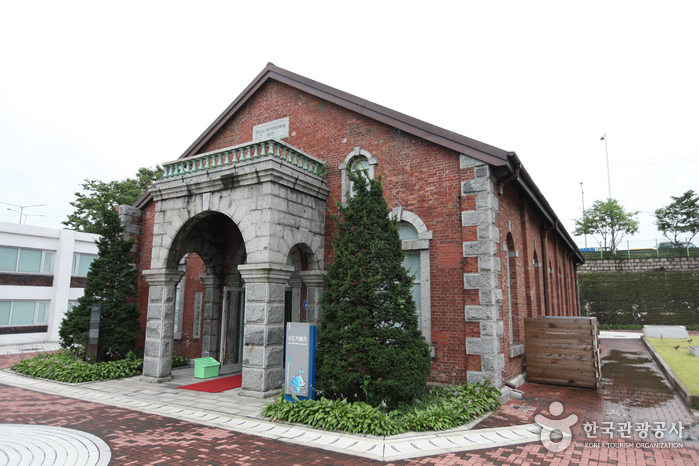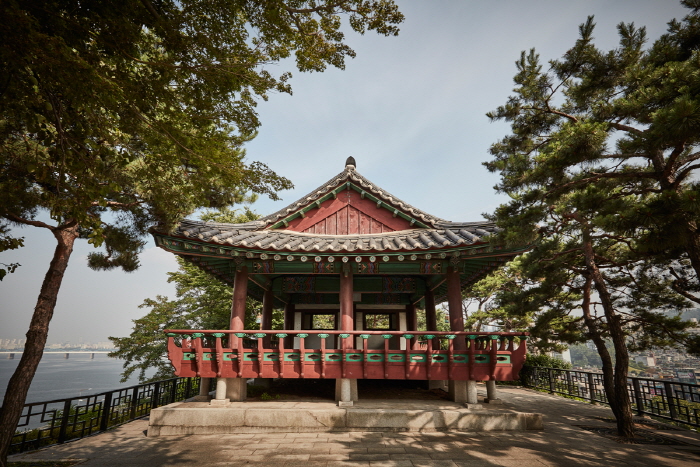CheongKwanJang - Seoyeouido Branch [Tax Refund Shop] (정관장 서여의도)
6.9Km 2024-04-18
#112-1, 780, Gukhoe-daero, Yeongdeungpo-gu, Seoul
-
Waterworks Museum (수도박물관)
6.9Km 2025-01-17
27, Wangsimni-ro, Seongdong-gu, Seoul
+82-2-3146-5936
The Ttukseom Water Purification Plant (Waterworks Museum and Slow Sand Filtration Basin) was completed in August 1908 as the first water purification plant ever built in Korea. In 2008, it celebrated 100 years of history with the opening of the Waterworks Museum, which showcases the history and value of Seoul's public waterworks. The museum was recognized for its modern architectural design and designated Tangible Cultural Asset of Seoul No.72.
Jiho Hanbang Samgyetang (Apgujeong Station) (지호한방삼계탕압구정역)
6.9Km 2024-03-18
22-11, Apgujeong-ro 28-gil, Gangnam-gu, Seoul
+82-2-518-3988
Jiho Hanbang Samgyetang serves samgyetang (ginseng chicken soup). Samgyetang (ginseng chicken soup) is a dish made by boiling chicken filled with ginseng, sweet rice, chestnuts, and dried jujube. It is often enjoyed as a pick-me-up in Korea. Other dishes include ori dak gaseumsal tteokgalbi (grilled duck breast galbi patties), buldakbal (spicy chicken feet), and cheonma ori boyangtang (nutritious duck soup with cheonma).
Le Labo - Garosu Branch [Tax Refund Shop] (르라보 가로수)
6.9Km 2024-04-18
1F, 28, Apgujeong-ro 10-gil, Gangnam-gu, Seoul
-
Hyosajeong Pavilion (효사정)
6.9Km 2025-01-13
55, Hyeonchung-ro, Dongjak-gu, Seoul
+82-2-820-9848
Hyosajeong Pavilion is where Nohan, the second vice premier of the Joseon dynasty during King Sejong and King Sejo’s reign, stayed. After he lost his mother, he built the pavilion to mourn at her grave while still being able to see his father’s grave in Gaeseong to the North. His brother-in-law, then Minister of the Interior, Gang Sa-deok named the pavilion “Hyosajeong,” which means pavilion of filial piety.
In order to find the original location of the pavilion, poems by Jeong Inji and Seo Geojeong and an old map of Korea were referenced, but the pavilion was not found because the surrounding landscape had changed too much. As a result, a location was selected and the pavilion was reconstructed at its current location. The house is 3 kan* in the front and 2 kan* on the side. The roof is a hip-and-gable roof. The pavilion has one room with under floor heating and a railing around the pavilion
(* kan: a traditional measurement that corresponds to the space between two columns)
![CheongKwanJang - Seoyeouido Branch [Tax Refund Shop] (정관장 서여의도)](http://tong.visitkorea.or.kr/cms/resource/49/2888549_image2_1.jpg)


![Le Labo - Garosu Branch [Tax Refund Shop] (르라보 가로수)](http://tong.visitkorea.or.kr/cms/resource/40/2879640_image2_1.jpg)

 English
English
 한국어
한국어 日本語
日本語 中文(简体)
中文(简体) Deutsch
Deutsch Français
Français Español
Español Русский
Русский